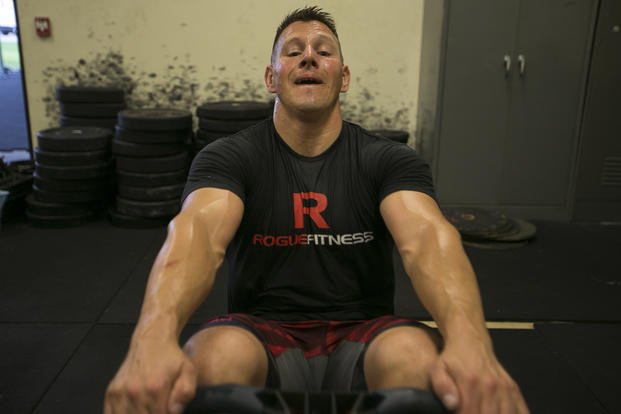Are you ready to sign on the dotted line and serve your country? If you think so, there are a few questions you need to ask yourself. What are your fitness and physical weaknesses? Have you accepted the fact that you have a weakness? Are you enjoying the journey of turning a weakness into more of a stronger part of your fitness foundation? If so, you may be ready to serve.
Even a seasoned athlete can have a weakness in one or more of the elements of fitness: strength, power, muscle stamina, endurance, speed, agility, grip and core/joint stability, flexibility and mobility.
It is quite difficult to be good at all of those elements. Stereotypically speaking, the following types of athletes can have a variety of the above weaknesses in their foundation:
Strength and power athlete: A foundation of strength can go a long way in any tactical program you seek. However, if you still think anything 100 meters is long distance, you may have a weakness in your cardiovascular endurance; muscle stamina also could be a weakness. Flexibility and mobility of the hips and shoulders are typical weaknesses of strength and power athletes, depending upon the sport they played.
If you observe the needs analysis of certain types of athletes, you will see most will require strength to see better performance in tactical professions. However, if you are already a strength/power athlete, your focus must be the specifics of your future training -- typically cardio, flexibility and other specific skills (swimming, rucking, running). Some weight loss also may be required for optimal performance if you are changing from a lineman in football to a Navy SEAL student, for instance.
Cardiovascular endurance athlete: Being good at running, swimming and rucking can be critical to the branch of service you select. Going special operations will test you in all of them eventually and expose a weakness in any of them quickly.
Non-impact athlete: Swimming, rowing, biking and contact sports like hockey can make running more painful if you are not doing a lot of running cross-training as well. Many hockey players and swimmers are especially susceptible to quick overuse injuries such as tendinitis, shin splints and stress fractures.
Swimming: A swimmer needs to add in more running during the offseason to condition the bones and joints for impact. Playing in zero gravity 100% of the time is not helpful if you have a future wish to serve in the military. You will have to run at boot camp and maybe even ruck, depending upon the branch of service.
Biking: Biking athletes have strong legs that are hard to challenge aerobically and anaerobically. However, impact from running and never focusing on upper-body strength can hamper a biker when joining the military. Adding in a progressive running program during non-competitive times will help build running capacity.
Rowing: Rowers are cardiovascular animals, and they typically cross-train with running. However, they also can have a push-pull imbalance. There have been many 220-plus-pound rowers who could do 30+ pull-ups but not bench-press their body weight. Adding a lifting and high-rep calisthenics cycle to balance out upper-body imbalances with exercises like bench presses, military presses, dips, push-ups and others can help create a well-rounded athlete ready for military service.
Runner: It is a runner's game in many military programs. However, adding weight in a ruck requires preparing the posterior chain for weight-bearing programming through deadlifts, squats, farmer walks and hang cleans. Also, runners tend to neglect their upper-body strength and stamina. Adding in a hard cycle of lifting and calisthenics will help build up for fitness testing qualifications and the follow-on training for military service.
Hybrid athletes: Since they practice many elements of fitness, lacrosse players, wrestlers, MMA fighters and rowers tend to do well at certain special-ops selections. They lift weights, do high-repetition calisthenics and run significantly on top of their aggressive teamwork and mental challenges in competition. However, neglecting certain skills like swimming (water comfort) or neglecting rucking will challenge even the most experienced cross-trained athletes.
Hyper-mobile athletes: Dancers, gymnasts, martial artists and even baseball players may not have issues with being inflexible, but they might be so flexible that their joints are unstable. Laxity is not that common but can affect up to 5% of all athletes. It can be congenital, as well as created after years of the flexibility requirements of certain activities. These athletes also need to cross-train with running and add weight training to create more joint stability. Pound for pound, a few of these athletes are typically the strongest in body-weight exercises, core strength and grip.
Most athletes can find a weakness in flexibility and mobility. Stretching (dynamic), foam rolling and working the joints through a full range of motion can be done in as little as 10 minutes a day. But even that can be neglected by the busy athlete. Consider it as part of your warmup or cooldown and do not skip it, even if you have to do it separately from your regular workout schedule.
Stew Smith is a former Navy SEAL and fitness author certified as a Strength and Conditioning Specialist (CSCS) with the National Strength and Conditioning Association. Visit his Fitness eBook store if you’re looking to start a workout program to create a healthy lifestyle. Send your fitness questions to stew@stewsmith.com.
Want to Learn More About Military Life?
Whether you're thinking of joining the military, looking for fitness and basic training tips, or keeping up with military life and benefits, Military.com has you covered. Subscribe to Military.com to have military news, updates and resources delivered directly to your inbox.



















